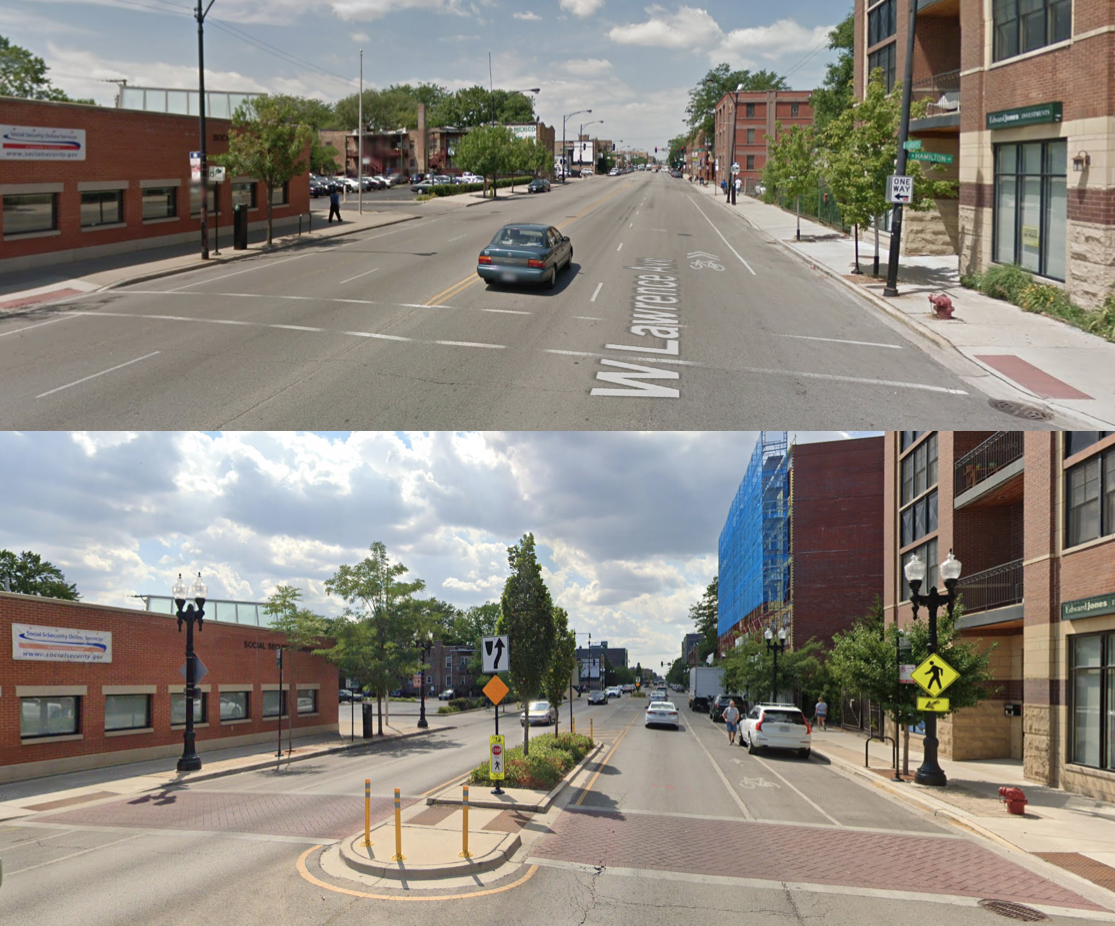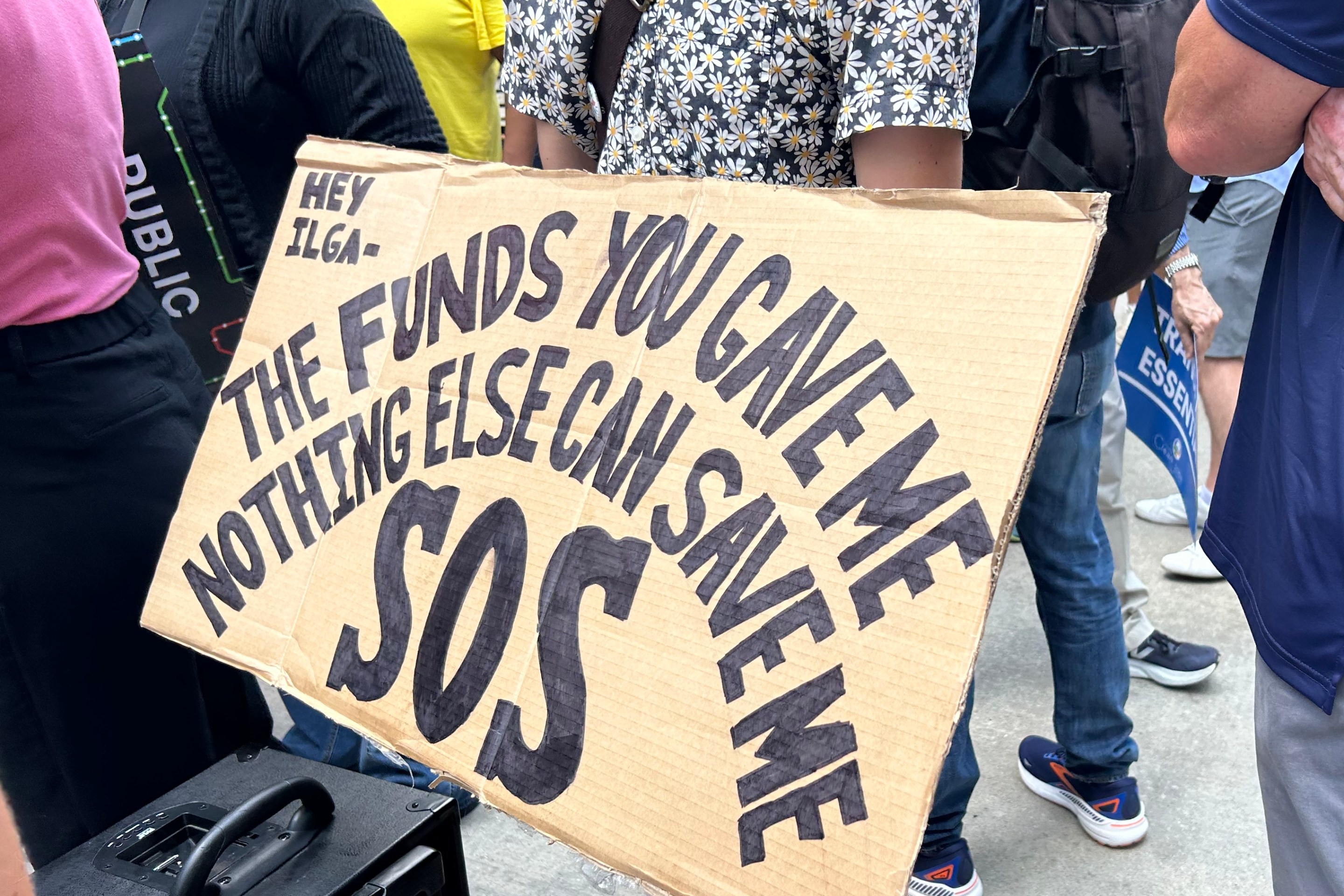In 2020, Chicago saw a 45 percent increase in traffic deaths compared to 2019, as speeding increased during the COVID-19 pandemic. Metropolitan Planning Council transportation director Audrey Wennink recently tweeted that last year there were also the most Illinois traffic fatalities in the past five years. Streetsblog Chicago invited her to elaborate on the subject, including possible solutions to reduce traffic deaths.
Illinois traffic fatalities hit a five-year high in 2020 at 1,195 deaths, despite periods of lockdown last year due to COVID-19. And in 2021, sadly, the numbers are trending even higher. As of Sept. 27, 2021 there was an increase of 71 fatalities over that date for 2020. The Illinois trend is consistent with a national trend of sharply increasing traffic fatalities. The National Highway Transportation Safety Administration’s early data show that an estimated 38,680 people died in motor vehicle traffic crashes nationwide in 2020, representing the largest number of traffic fatalities since 2007, an increase of 7.2 percent compared to the 36,096 fatalities reported in 2019. At a national level, vehicle miles traveled decreased by about 13 percent, which means that the rate of severe crashes increased sharply.
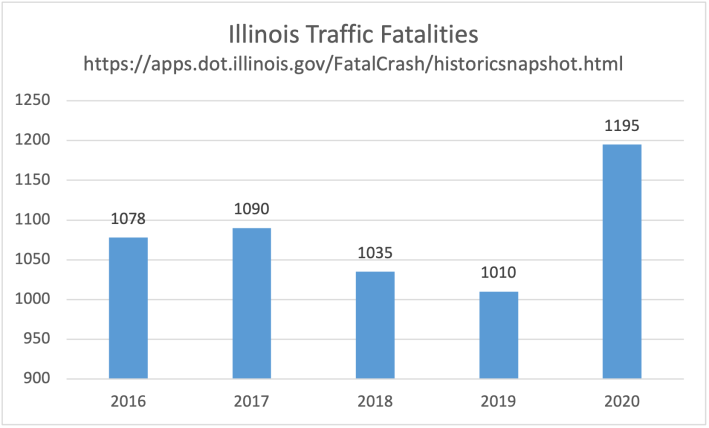
One of the primary drivers of the increases in fatalities in Illinois and nationally is speeding. For periods in 2020 with less traffic congestion to slow them down, drivers tended to speed because roadways are typically designed for higher speeds than what is posted. As noted by Chuck Marohn in his recently published book, Confessions of a Recovering Engineer: Transportation for a Strong Town, “it is a shockingly common experience across North America to have a street designed to accommodate speeds of 60 miles per hour, traffic flow at 45 miles per hour, and have the legal speed limit designated at 30 miles per hour.”
Take DuSable Lake Shore Drive, for example. The signs say the speed limit is 40 mph, but the road is designed for speeds much higher and cars regularly travel at 50-60 mph or more. It is critical to design roads so that drivers will interpret their surroundings such that they will drive at the desired speed. We need to fundamentally approach transportation in a different way that does not prioritize speed over safety, and increases the safety of the environment for pedestrians and cyclists.
Only 10 percent of Illinois roadways are controlled by the state, but because IDOT controls so many high-volume roadways, 50 percent of fatalities occur on state roads. Interstate highways make up a relatively small percentage of Illinois fatalities, comprising only 13 percent overall. While we have had a Complete Streets law on the books in Illinois for more than a decade, safety outcomes for pedestrians are only getting worse. Pedestrian fatalities have steadily increased over the past five years. If we want people to choose to walk, bike, and ride transit more – because of the societal benefits to mitigating climate change, improving public health, and improving transportation affordability – we must create a system that is safe for them.
Many of the most dangerous streets, particularly for pedestrians are arterials. In Illinois arterial streets have a disproportionately large share of fatal/serious injuries. From 2015-2019, 41 percent of the miles driven in Illinois were on arterials but 50 percent of the serious injuries or deaths happened on them. Smart Growth America’s Dangerous by Design report focusing on roadway design impacts to pedestrians notes that you can design a road for safety or for speed, but not both. Smart Growth America has also provided an interactive map of pedestrian fatalities from 2008 -2019, which allows residents to locate the most dangerous streets where they live. In Chicago, many arterials like Western, Ashland, 55th, and Pulaski show clusters of pedestrian fatalities.
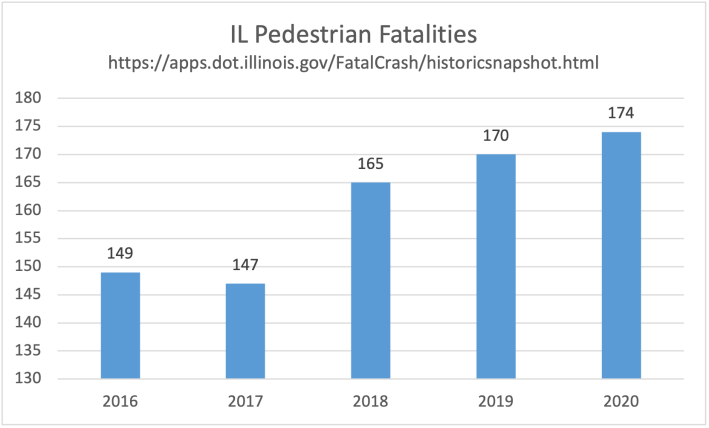
The Illinois Department of Transportation – as well as County DOTs and municipalities – should aggressively be implementing Complete Streets strategies everywhere, as part of their maintenance programs and any other roadway interventions. This takes proactive and strong partnerships between IDOT and local jurisdictions, especially given that many IDOT – managed roadways go through municipal downtowns. Chicago is criss-crossed with IDOT- managed roadways, as shown here.
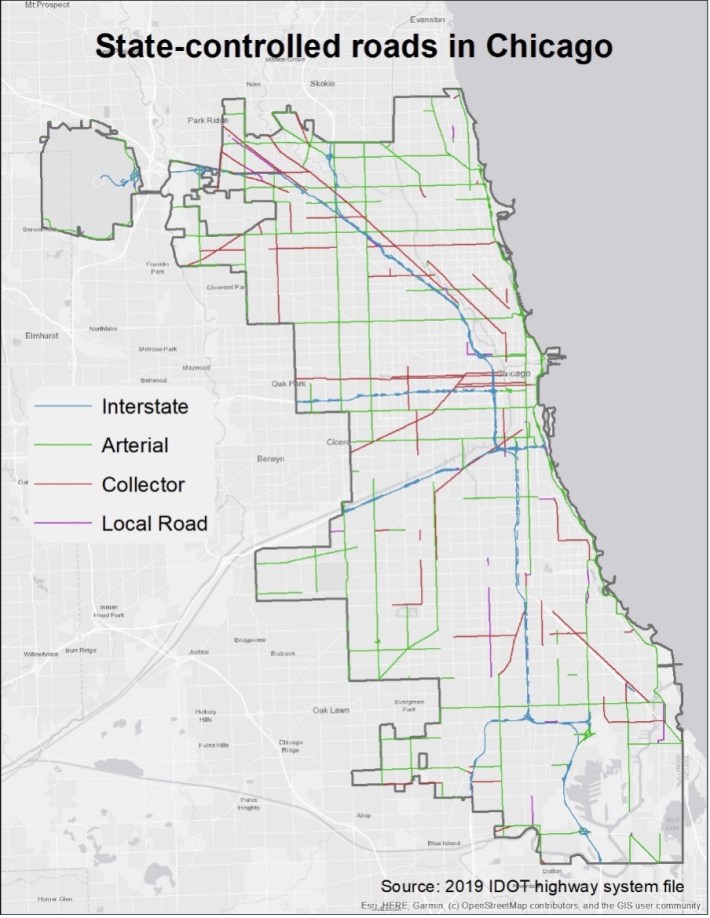
IDOT, counties and municipalities should be seeking to put in place quick implementation projects such as those that will shorten crossing distances for pedestrians and visually narrow roadways to reduce speeding. A proven effective strategy is road diets – instances where a four-lane road is converted to a two-lane road with center turning lane and bicycle lanes are added. For example, the suburb Des Plaines is considering a road diet of Busse Highway. Such projects can be accomplished as part of routine resurfacing.
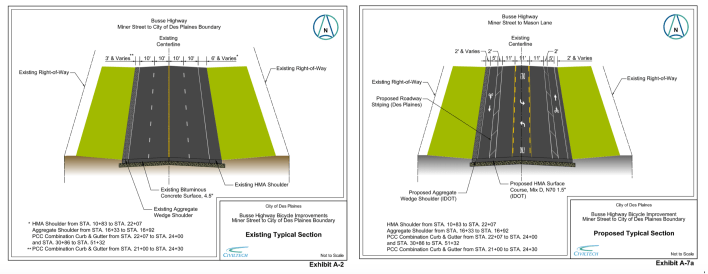
The bottom line is that we must stop accepting death as the cost of mobility on our auto-dominated transportation system. Crashes are preventable. We can create a safer transportation system if we take a more proactive approach to roadway redesign.
